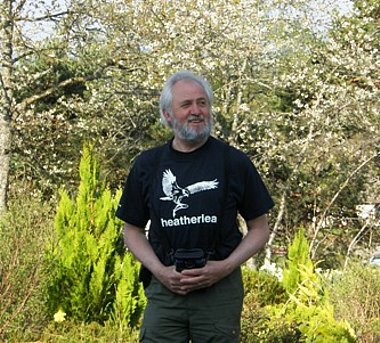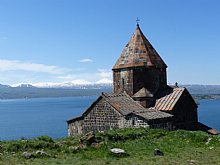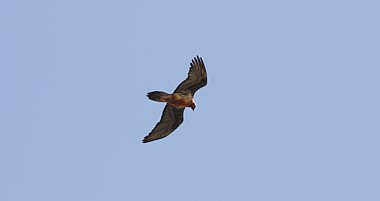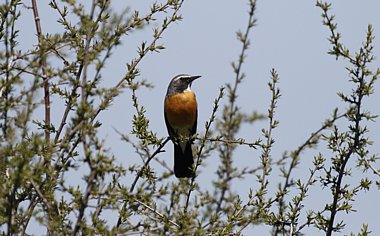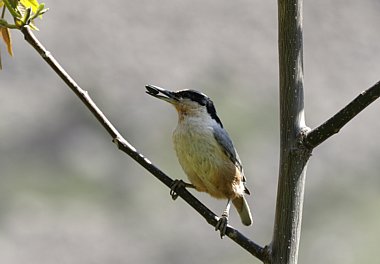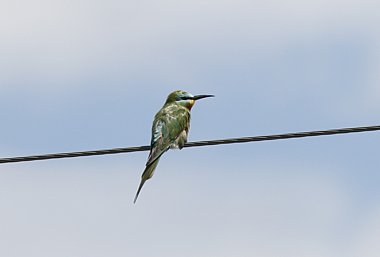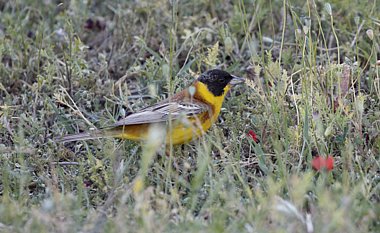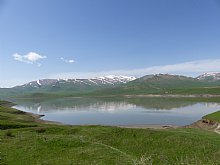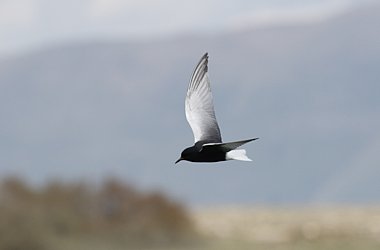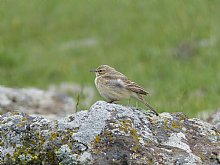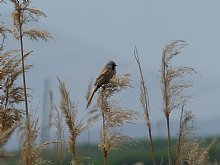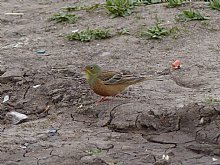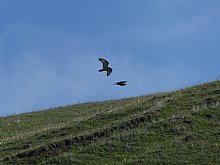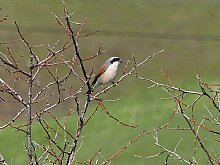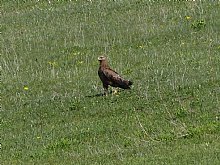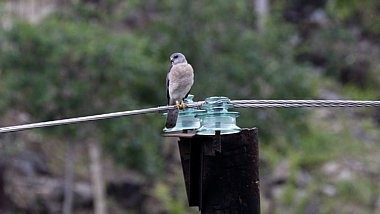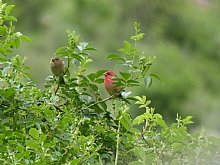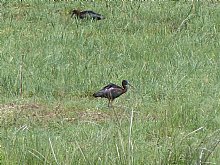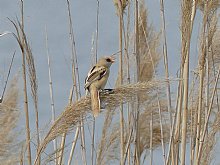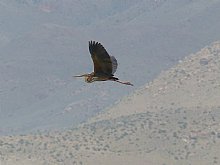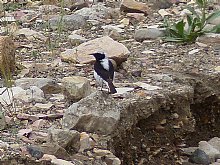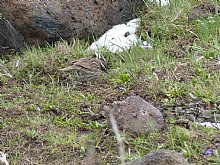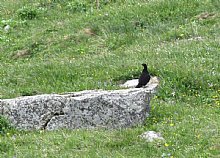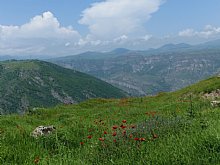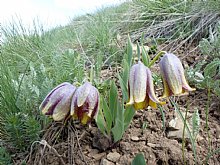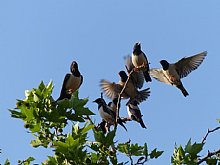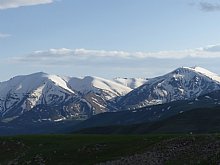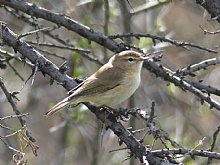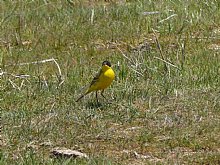Armenia
Relaxed Eastern European birding in a quiet, unspoilt environment
| Destination | |
|---|---|
| Focus | |
| 2026 Dates | |
| Duration | 12 Days |
| 2026 Price | £3495 pp £295 single supplement. Deposit £800 pre-flight airport hotel and lounge are inc. |
| Max Group Size | 12 |
A small, landlocked country in the Caucasus region, Armenia is rural and unspoilt, sparsely populated and very hospitable. The country forms a geographical bridge between the avian populations of Europe and Asia, and it holds a variety of habitats including semi-desert, steppe, deciduous forest, meadowland, and alpine grassland. The landscape alternates between deep canyons, rocks and screes, lakes, rivers, wetlands and marshes, and the country is incredibly scenic, with the Transcaucasian mountains providing a backdrop to beautiful pastoral landscapes. Most fields are organically managed and full of wild flowers, bees, butterflies and grasshoppers. The slopes, plateaus and mountains are mostly untouched, lightly grazed and left to nature, set among a carpet of flowers including wild tulips, crocuses and orchids disappearing off to the horizon in a pink haze.
Birdlife is abundant in many areas, with storks, shrikes, wheatears, buntings and rosefinches seemingly everywhere, and sometimes Golden Orioles can be seen along riverside poplars. Flocks of European Bee-eaters fly past, with groups of up to 400 often seen, and every so often one of the flocks consist of Blue-cheeked Bee-eaters!
Armenia is stunningly beautiful and very quiet, so we are often left to bird in peace. And what birds! There are so many specialist species which are difficult or near impossible to see elsewhere in Europe. Armenia holds over 350 recorded species, with more than 200 breeding, and many will be “lifers” for those who have not visited this remote part of eastern Europe. Among our targets will be mouth-watering birds such as Marbled Teal, White-headed Duck, Pygmy Cormorant, Collared Pratincole, Caucasian Black Grouse, Caspian Snowcock, White-tailed Lapwing, Armenian Gull, Syrian Woodpecker, Blue-cheeked Bee-eater, Radde’s and Alpine Accentor, White-throated Robin, Finsch’s, Red-tailed Wheatear, Red-breasted Flycatcher, Rosy Starling, Western and Eastern Rock Nuthatch, Caucasian Mountain Chiffchaff, Upcher’s, Eastern Olivaceous, Eastern Orphean, Green and Menetries’s Warbler, Red-fronted Serin (this species possible but difficult), Grey-necked and Ortolan Bunting, Armenian Horned Lark, and many more. Many raptors breed here, including Golden, Lesser-spotted and Eastern Imperial Eagle, Lammergeier, Egyptian, Griffon Vulture, Long-legged and Steppe Buzzard, Lesser Kestrel, Red-footed Falcon and Levant Sparrowhawk, and we expect a total of around 180 species, including many migrants heading north in spring.
Other birds may include Spotted Crake, Little Crake, Corncrake, Gull-billed Tern, Laughing Dove, European Scops Owl, Eurasian Eagle Owl, Eurasian Bee-eater, European Roller, Greater Short-toed Lark, Lesser Short-toed Lark, Rufous-tailed Scrub Robin, White-throated Robin, Isabelline Wheatear, Black-eared Wheatear, Rufous-tailed Rock Thrush, Blue Rock Thrush, Moustached Warbler, Paddyfield Warbler, Great Reed Warbler, Eastern Olivaceous Warbler, Barred Warbler, Semi-collared Flycatcher, Red-backed Shrike, Lesser Grey Shrike, Woodchat Shrike, Alpine Chough, Red-billed Chough, Pale Rockfinch, Rock Sparrow, White-winged Snowfinch, Trumpeter Finch, Common Rosefinch and Rock Bunting.
Each habitat hosts specific flora and fauna, and our targets change as we tour the country; woodpeckers and tits occupy forests; wheatears and nuthatches live in semi-desert; larks and buntings are found in grasslands, herons and ducks at lakes and wetlands, and Snowcock in high mountain areas. Some species will require a little effort, and to see the mountain birds we might have to walk for about an hour.
Armenia is a cradle of early Christianity, and its landscape features many early Christian treasures, churches, relics and monasteries. Our focus is firmly on birding, though this tour will also appeal to those with an eye for culture as we visit some of these sites, perhaps including 'Carahunge', a stone circle older than Stonehenge, without losing important birding time. We cover a large part of the country during this comprehensive tour, and you will leave with the sense of having experienced 'true' Armenia and its birdlife.
This is a comprehensive birding tour, featuring many key species of far-eastern Europe. Local people and culture are wonderful, cuisine is excellent and Armenia has a reputation as being safe for tourists. We are accompanied throughout by a local Guide who will help us appreciate our surroundings, and we are sure you will enjoy the landscape, cultural treasures, and of course Armenian hospitality.
Enjoy your complimentary pre-flight overnight hotel before your holiday begins. Full details from our office! Read more about our Pre-flight Service here!
Day 1: London to Yerevan
After relaxing in our complimentary VIP Airport Lounge, we fly from London to Yerevan (probably with a flight transfer at a major European hub). We will be welcomed by our local driver and local guide and go directly to Royal Plaza Hotel where we stay for two nights.
Day 2: Armash Fish Pond
Our tour begins at the Armash fish ponds, a location perhaps boasting the largest concentration and variety of bird life in all of Armenia. Nestled in the plains and foothills of Mount Aragat, this is an area of extensive wetland which is one of the Caucasus' ornithological hotspots. The terrain is mainly saline semi-desert, yet the pools, natural salt marshes, irrigation and drainage channels, standing fresh water and warm artesian springs have turned Armash into a birding paradise. The diversity is impressive, with about 220 different species recorded and possible are Red-necked Grebe, Little Bittern, Black-crowned Night Heron, Squacco and Purple Herons, Pygmy Cormorant, Glossy Ibis, Garganey, Red-Crested Pochard, Ferruginous Duck, Western Marsh Harrier, Water Rail, Little Crake, Stone Curlew, Collared Pratincole, Kentish Plover, Pied Avocet, Black-tailed Godwit, Wood and Green Sandpipers, Armenian Gull, and Caspian, Gull-billed, Little, Black, White-winged and Whiskered Terns. This is the only site in Armenia for Marbled Teal, White-headed Duck, Eurasian Spoonbill and the graceful White-tailed Lapwing, while vagrants might include Red-necked Phalarope, Ruff, Spotted Redshank, Curlew Sandpiper and Broad-billed Sandpiper.
Birding on dry land is also impressive, and includes Blue-cheeked Bee-Eater, European Roller, Lesser Short-toed Lark, Rosy Starling, Sand Martin, Yellow Wagtail, Bearded Reedling, and many other passerines. The great attraction of these fish ponds lies also in the annual practice of draining the pools in order to harvest the fish, thereby providing a habitat exceptionally rare in Armenia, that of exposed mud, which is used extensively by many thousands of waders during migration.
Another link in the rich chain of habitats here is the semi-desert, with Tamarisk, Camel's Thorn and Sagebrush vegetation which supports an impressive selection of warblers. Bushes and scrubby areas hold Olivaceous, Upchers and Menetries's Warblers and Finsch's Wheatear, while dense stands of reed contain Great Reed, Sedge, Cetti's, Savi's and Paddyfield Warblers, and many other passerines. A great first full day!
Day 3: Mount Aragats and Pemzashen/Gyumri
We follow a route west, travelling and birding along the southern and western foothills of Mount Aragats. Within sparsely covered mountain steppe, rocky out-crops and shallow dry ravines we search for a range of specialist species including Crimson-winged Finch, Finsch’s Wheatear, Western Rock Nuthatch and Rock Bunting. Cultivated fields and orchards offer variety among the natural habitats, and we may see Long-legged Buzzard, Lesser Kestrel, Eurasian Hoopoe, Roller, European Bee-eater, Crested and Bimaculated Larks, Tawny Pipit, Isabelline and Eastern Black-eared Wheatears, Red-backed and Lesser Grey Shrike, Rosy Starling, Rock Sparrow, and Ortolan and Black-headed Buntings. Working our way to Pemzashen, we check any pools or scrapes, some of which are only temporary, are always worth checking for migrant waders. Overnight Stone Art Guest House or Gyumri for two nights.
Day 4: Lake Arpi
One of the richest ornithological sites in Armenia, Lake Arpi lies within a greater National Park and consequently is afforded special protection. Habitat variety is key to its success as a birdwatching site - the mountain steppe replaced by subalpine meadows at higher elevations, while at lower levels, wetlands occupy depressions in the river valleys and around the lake itself. A small breeding population of Common Crane is found here, as is one of the largest colonies of Armenian Gull in the world. It is also the only regular place in Armenia to see Dalmatian Pelican. In addition to these principal targets, White and Black Storks, Great Crested Grebe, Pochard, Gadwall, Ruddy Shelduck, Grey Partridge, Quail, Long-legged Buzzard, Western Marsh and Montagu’s Harriers, and a range of common and migrant waders can be found. Passerines including Tree and Water Pipits, Black-headed Wagtail, Whinchat, Marsh Warbler, Ortolan Bunting, Common Rosefinch and Twite are likely around the lake, with adjacent rocky outcrops inhabited by Horned Lark, Black Redstart, Rufous-tailed Rock Thrush, Western Rock Nuthatch and White-winged Snowfinch.
Day 5: Bazum Range and transfer to Haghpat
Today we transfer north, driving 120km over the Bazum Range and some impressive scenery towards Stepanavan. The whole area is good for raptors with Lesser Spotted and Booted Eagle, Common and Honey Buzzard and Northern Goshawk. On northern slopes of Bazum the habitat changes to mountain broadleaf forest mixed with conifers where associated passerines including Common Redstart, Semi-collared Flycatcher, Common Crossbill, and a range of woodpeckers may be seen. Overnight Hotel Qrfo, for one night.
Day 6: Lori Plateau and Dilijan
The series of vegetated pools and scrapes on the Lori Plateau and Debet river gorge attract a diverse range of local and migratory raptors, waterbirds and passerines. Inhabitants of the area include Little and Great Crested Grebe, Black-crowned Night, Squacco and Purple Heron, Little Egret, Glossy Ibis, Ruddy Shelduck, Garganey, Pochard, Water Rail, Avocet, Broad-billed and Terek Sandpiper, White-winged and Whiskered Tern, with another chance of Common Crane. Such an abundance of prey attracts raptors including Marsh and Montagu’s Harrier, while passerines around the ponds include Black-headed Wagtail and a range of warblers. Afterwards we continue to Dilijan with stops on the way in forested habitats if time allows. Overnight Tufenkian Hotel, Dilijan for two nights.
Day 7: Tsaghkunyats Mountains
We plan to spend the day exploring the upper timberline and talus fields of the Tsaghkunyats Mountains where our primary target for the day is Caucasian Grouse. Access to the hills is in 4x4 from Margahovit, and other high-altitude species present within the range include Grey Partridge, Water Pipit, Black Redstart, Rufous-tailed Rock Thrush, Ring Ouzel, Twite, the scarce Red-fronted Serin, Bearded and Griffon Vultures, Golden and Lesser Spotted Eagles and Northern Goshawk. In the foothills, village hayfields and wet meadows en route we look out for Quail, Tree Pipit, Black-headed Wagtail, Whinchat, Grasshopper and Cetti’s Warblers, Red-backed Shrike and Common Rosefinch. Later in the day we visit the broadleaved forest and pine plantations on the northern slopes of the nearby Pambak Mountains for Caucasian Chiffchaff, Red-breasted and Semi-collared Flycatchers, Green Warbler, Siberian Stonechat (armenica race) and White-throated Dipper plus other species before returning to our Dilijan base.
Day 8: Dilijan to Yeghegnadzor, via Lake Sevan
Driving in a south-easterly direction we pass Lake Sevan, one of the world's largest freshwater alpine lakes. During the Soviet era the shoreline of the lake was extensively planted with poplar, pine and especially sea buckthorn, while quieter small adjoining wetlands and lagoons boast plenty of birdlife too. We spend the day birding hotspots around the vast Lake for Black-necked Grebe, Black-crowned Night Heron, Cattle Egret, Glossy Ibis, Ruddy Shelduck, Garganey, Ferruginous Duck, Black-winged Stilt, Little Ringed Plover, migrating parties of stints and sandpipers, Common Snipe, Ruff, Common, White-winged and Whiskered Terns (occasional Black Tern too), with Marsh Harrier, Northern Goshawk and Peregrine attracted to the area. Hoopoe, European Bee-eater and Roller area likely, with tree plantations supporting Woodlark, Tree Pipit, Mistle Thrush and Penduline Tit. Sea-buckthorn thickets are home to Cetti’s and Marsh Warblers and Caucasian Chiffchaff, and Red-backed, Lesser Grey and Woodchat Shrike. Overnight in Hotel Arpa, Yeghegnadzor for two nights.
Day 9: Mount Gndasar and Jermuk Gorge
Our day starts with an early morning ascent in 4x4s up to Mount Gndasar to look for Caspian Snowcock at a regular site. Most of the day will be spent high in the mountains among rocky outcrops, and if our Snowcock expedition is successful, we can devote more time searching for Golden, Lesser Spotted and Short-toed Eagles, Griffon, Bearded and Egyptian Vultures, Long-legged Buzzard, Grey Partridge, Woodlark, Water Pipit, Crag Martin, both Radde’s and Alpine Accentors, Black Redstart, Rufous-tailed Rock Thrush, Ring Ouzel, Western Rock Nuthatch, Red-billed Chough and Red-fronted Serin. The area regularly provides superb views of Brown Bear and Bezoar Goat and if lucky we will see both, with additional chances of Common Cuckoo, Syrian Woodpecker, Lesser Grey and Red-backed Shrikes, Golden Oriole and Black-headed Bunting.
Jermuk Gorge on the River Arpa valley is famous for its Mediterranean-type landscape, and after time in the mountains we continue birding in a nice mixture of habitats. Jermouk Gorge is one of the prettiest in Armenia with lots of basalt columns and - of course - a gorge without a monastery is impossible in this country! We will have a short walk to Gndevank Monastery, which has a 10th -13th century round cathedral with likely birds including Chukar, Turtle Dove, Alpine Swift, Roller, Crag Martin, Ring Ouzel, Blue Rock Thrush, Eastern Black-eared Wheatear, Eastern and Western Rock Nuthatches, Lesser Whitethroat, Red-fronted Serin and Rock Bunting. Orchards, farmland and forestry are home to Hobby, Levant Sparrowhawk, Golden Oriole, Syrian Woodpecker, Dipper, Eastern Olivaceous Warbler, Common Nightingale, Golden Oriole and Black-headed Bunting.
Day 10: Vedi Hills and Urts Mountains
Another varied day, beginning in the arid Vedi Hills - an area characterised by gentle treeless hills, rock exposures sparsely covered with Tamarisk, wild almond, Pallas’s buckthorn, sagebrush and other semi-desert vegetation. Patrolling raptors include Cinereous, Griffon and Egyptian Vultures, Long-legged Buzzard and Short-toed Eagles while the area also hosts semi-desert specialists like Rufous Bush Chat, White-throated Robin, Eastern Black-eared, Isabelline and Finsch’s Wheatears, Upcher’s and Eastern Orphean Warblers, Greater Short-toed and Crested Larks, Tawny Pipit, Eastern Rock Nuthatch, Rock Sparrow, Pale Rockfinch, Trumpeter and Desert Finches, Rock and Grey-necked Buntings. Later we visit the Urts Mountains where we have a chance for the scarce Red-tailed Wheatear before returning to Yerevan a#where we stay in the Royal Plaza Hotel again for two nights.
Day 11: Southern Aragat Mountains
Our last day birding will be spent in the foothills prioritising any unseen species which make this region their home. Horned Lark, Radde’s and Alpine Accentors, Bluethroat, White-throated Robin, Rufous-tailed Rock Thrush, Ring Ouzel, Barred Warbler, Rock Sparrow, Snowfinch and Crimson-winged Finch may be all be found higher up among the mountain meadows and rock fields and later near the 10th century Amberd Fortress we will look for Alpine Swift, Red-billed Chough, Crag Martin, and Ortolan and Rock Buntings. A selection of raptors is found in this part of the Aragats too, including all the European vultures, Golden, Lesser Spotted, Booted and Short-toed Eagles, Black Kite, Long-legged, Common and Honey Buzzards, Peregrine, Hobby, Common Kestrel, Eurasian Sparrowhawk and Northern Goshawk making it a fitting location to end our Armenian birding experience.
Day 12: Departure
Airport transfer, and departure from Armenia via a morning flight from Yerevan to London, via a European hub for transfer.
Please note: all itineraries are given as a guide only. Actual holiday content may vary according to the judgement of your guide, and elements beyond our control (eg weather).
What's included in your holiday price:
- return scheduled flight from London - Yerevan (via a major European hub), airport taxes, baggage and hand luggage up to airline included limit.
- airport transfers, ground transportation including 15-seat vehicle (Mercedes Sprinter type) and 4x4 vehicles where necessary, accommodation and meals as specified.
- the services of your Heatherlea leader and local guide/translator.
- entrance fees to museums and cultural and historical centres.
- The Heatherlea Pre-Flight Service offers everything you need at the airport, including hotels, car parking, airport lounges, regional flights, and upgrades. Let Heatherlea take the strain! Pre-flight airport hotel and lounge included free of charge subject to terms and conditions. Read more ...
What's not included in your holiday price:
- travel to and from departure airport before and after holiday, in-flight meal, baggage above airline included limit.
- incidental tips, expenses of a personal nature including drinks and personal insurance.
More holiday information
Accommodation is in comfortable hotels to a good standard, with all rooms en suite. Please see individual daily itineraries for weblinks to hotels.
Food Breakfast is usually a buffet with boiled eggs and lots of herbs, yoghurts and cheeses, pastries and even cake! Lunches are mostly in restaurants, with lots of fresh herbs and fresh vegetables, fish or meat, though some days we take well-prepared lunchboxes for picnics. Be careful with your starters, more dishes are always arriving, followed by a dessert or fresh fruit, perhaps including pears and apricots. Armenian cuisine is a mix of oriental, European and Mediterranean food, and typical evening dishes feature fish and barbecues, and with many fresh vegetables and herbs, often accompanied by live traditional music.
Walking is generally light/moderate. There may be some uphill track and road walking, and overall an average level of fitness is required.
Weather Typically, temperatures will range from 10°C in the early morning to around 25°C, though temperatures can be even higher in the gorges. Sunshine should be plentiful, but cloud and rain are possible. Cold weather, with temperatures as low as 5°C, is rare but possible in the high mountains.
Insects biting insects may be encountered, though not usually as a major problem. A good repellent is advised, just in case.
Group size is restricted to 12 clients maximum.
Flights are by scheduled airline, from London. We will likely have to change flights in a European hub airport. We can quote without flights should you wish to make your own arrangements. If you wish to add an extension either before or after your holiday, please contact us and we will be happy to arrange this for you.
Your Leaders
Jozef Leestmans
A highly experienced European birder, Jozef guided for Heatherlea during several years while he was living in the Highlands, and also led our tours in Belgium, Holland and Armenia. Jozef has become an expert in guiding in Armenia, where he has guided several trips for birders and people interested in culture. Jozef was the first person to find a White-eared Bulbul in Armenia! He says 'I just love Armenia so much that I can't help but promote it!'
We are delighted to welcome him back to the team in 2024.
Other birding and wildlife holidays in Armenia
Why choose Heatherlea for your birding and wildlife holiday in Europe?
Our overseas holidays are planned with care to offer great birding and wildlife, led by capable Leaders who really look after you. Every holiday is run the 'Heatherlea Way', and we hope our Overseas Adventures remind you of the quality and care so many of you enjoy in Scotland. That means rewarding and exciting days in the field, and good quality accommodation and meals, with a real flavour of the country we are visiting. Heatherlea always seek to include the personal touches that make all the difference.
Heatherlea holidays are not ‘dawn to dusk’ expeditions. Our less-intensive approach is ideal for those who want to relax whilst experiencing the best wildlife watching, and wherever possible we organise early or late activity on an optional basis. We also take sensible breaks when in very hot places and regular comfort breaks on every holiday whenever possible. All itineraries are planned carefully around the best wildlife opportunities, and you won’t miss out on memorable wildlife, whilst enjoying relaxed, informal days that are great fun.
The really important part of any wildlife holiday is the experience for you, our valued customer. Heatherlea invest in many things to offer you the best possible service;
- We have been organising birding and wildlife holidays for over 30 seasons, and have a highly experienced and capable office team. We also offer a telephone and email service outside normal office hours.
- Heatherlea overseas holidays have a maximum of 12 clients per trip, putting the emphasis on personal service, and helping you get the best possible experience.
- Our holidays often include things which others might invite you to pay yourself, for instance Departure Taxes and tips to hotels.
- All elements of our holidays are sold under our own licence, ATOL 6113. Under ‘Flight-Plus’ legislation it is a legal requirement of any tour operator to hold an ATOL licence for the supply of any overseas holiday where a flight is involved, if that holiday includes either overseas accommodation and/or car hire. It can be a criminal offence for an operator to book flights as part of a package without an ATOL licence. Heatherlea also hold full Tour Operator Insurance for your added protection.
- Heatherlea is your complete wildlife holiday provider. Our ‘Back Office’ team can organise all your pre-flight and other travel needs. Our specialists will help you book the right services, at the best price. Book holiday extensions through us, and your ATOL protection is extended further. We don’t charge extra for this service.
- Heatherlea is a limited company, registered in Scotland, and registered to pay VAT (applies to all holidays within the European Union).

